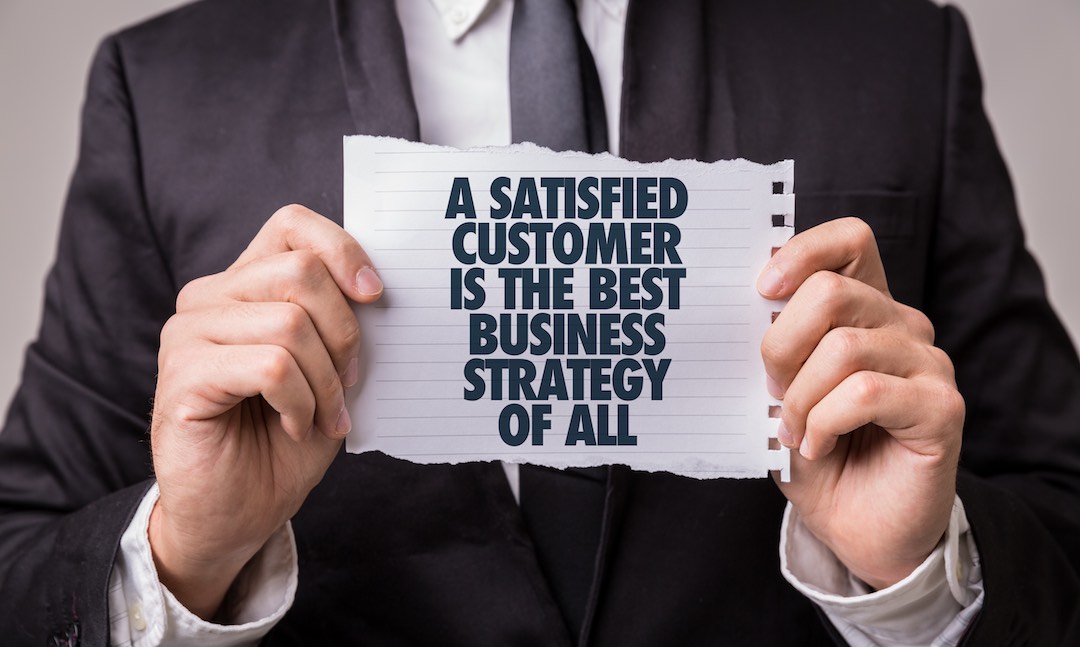 Most marketing people put a lot of emphasis on logos. To hear them talk, it’s the logo that sells the product. They like to show you logos they’ve designed that have gone on to “build” amazing brands. But they’re not going to show you their client’s brands if the logo fails. Remember, in Las Vegas they just talk about winners. Same deal here.
Most marketing people put a lot of emphasis on logos. To hear them talk, it’s the logo that sells the product. They like to show you logos they’ve designed that have gone on to “build” amazing brands. But they’re not going to show you their client’s brands if the logo fails. Remember, in Las Vegas they just talk about winners. Same deal here.
In order to be a winner in the consumer packaged goods (CPG) market, it takes a lot more than a good logo. But when you’re starting your business you might not know that and that’s when the logo designers will descend. If you bought into any of the popular misconceptions about CPG brand success, you yourself might think success is a major function of a good logo. It’s not!
Ironically, in most cases, it’s the other way around. Consumer brand success can actually make the logo design famous and “successful.” You have to ask yourself how many great logos were lost because their consumer brands failed? Success and failure in the CPG space is certainly influenced by logo design, but distribution and the maintenance thereof are the true keys to CPG brand success.
We’ve seen great logos die because the brands upon which they were emblazoned failed to get and keep distribution. The brand owners were sure their logo design alone would save them. In fact, many thought being in stock and staying in stock was less important than their logo design. When the brand loses distribution, the logo fails – no matter how well the logo is designed – period!
With that said, a good logo can, over time, with the aid of excellent distribution, help you build your brand. By the same token, a bad logo can certainly hurt the sales of your brand. So, even though it’s not the most important part of consumer package brand success, it can play a significant positive or negative role.
Here are the common types of logo mishaps that can hurt your brand:
1. Indefensible
You and your friends or your designer come up with a great idea for a logo. It satisfies all the rules to be an eye-catching logo. It has everything to do with your brand. Everybody loves it.
Just one thing – somebody else had it first and has the trademark to the design. But you didn’t do a thorough trademark check because you didn’t see it in the market. Instead, you went ahead and printed thousands of labels, affixed them to your branded products, and put them into distribution.
Then you got the letter from their attorney telling you your great logo is actually theirs, has been trademarked, and has sold in interstate commerce long before you used it in your first store. You may be informed that your logo is similar enough to their client’s to cause confusion in the marketplace, which is why they are requiring you to stop using it.
This type of logo mishap requires a recall, a relabel, and a remarketing program using your new logo. You have to hope you don’t lose existing customers in the swap out. You have to hope your big store buyers will continue purchasing your branded products with the new logo. And you have to hope you can settle out of court and for an affordable amount.
As your business grows and your brand becomes international, you may run into a variation on this logo mishap. Someone else registered the trademark to your logo before you did in some other country in which you want to do business. Now you have to change your logo for that market or buy out the holder of the trademark you wanted to use in that country.
Another variation on logo mishaps is when you have trademarked your logo, but a bigger, more established, and more well-funded player decides to copy your logo knowing you can’t afford to sustain a legal battle to defend your trademark rights. A commonly held misconception is that somehow the trademark itself prevents your logo from being copied. It doesn’t.
In fact, the trademark just gives you permission to throw a lot of money at attorneys who will try to defend your logo in an expensive and time-consuming legal action where, often times, only the attorneys benefit. Your trademark is additional evidence, but not necessarily protection. In any case, it’s a civil matter which requires expensive legal action. If someone else has used your logo in interstate commerce and developed any kind of substantial business before your use, they might successfully challenge your trademark whether or not the other business had ever trademarked their logo.
You can avoid (most of) these mishaps by doing a thorough trademark search and a thorough industry search before you put that logo on your label.
2. Unreadable
Common logo mishaps we see in the marketplace are unreadable logos. The designers made them so “cool”, so avant garde, so whimsical, so mysterious, or so symbolic that nobody gets it. Maybe the font is not legible. These are bad logos because they are simply unreadable. Shoppers look at the logo and try to figure out what the logo means rather than whether to make the purchase. The designer didn’t make it simple and obvious.
It may be a great logo design but it is still unreadable because it is placed on a colored background that makes it disappear. Instead of popping, it blends into its background. Maybe it’s too light or undefined. Maybe it’s too large and takes up so much of the label you can’t tell where the legal requirements stop and the logo begins.
Bad logos are unreadable possibly because they were designed on a backlit screen but now they sit under harsh overhead store lighting. Or worse, they’re unreadable because they sit on the back of the shelf in the shade of the shelf abov . Maybe the designer didn’t take the store lighting or placement into consideration.
3. Unrelatable
Another logo mishap occurs when the logo design is completely foreign to the product, any attribute of the product, anything in the customer’s memory, or any feeling the customer will experience by using the product. The customer cannot relate the logo to any outside reference. Because they can’t relate to it in any way, they forget about it!
Some designers think that over time and un-relatable logo will begin to become relatable because the customer will begin to identify it with the branded product, even though it has nothing to do with the product. This argument works only if the brand builder has already achieved massive distribution.
However, it is more common that in the early days, when the brand is very fragile and has not achieved traction, that an un-relatable logo will actually hurt sales and make it much more difficult for the brand to ever get strong enough to make logos like this familiar, recognizable, and memorable.
4. Confusing
Some brand builders will choose an image they like, one that’s not necessarily related to the product or the brand name, just because it’s their brand and they can do what they want – they think! We think logos are too important for any brand builder to have the luxury to impose their will on the marketplace, especially when the marketplace itself is so demanding, competitive, and fickle. With so many brands competing for the customers’ attention, it’s easy to cause confusion.
Customers are easily confused, and when they are confused, they don’t buy. Too many elements in a logo can cause confusion. Too many colors can cause confusion. And unsuitable images can cause confusion. An image that is too small to recognize causes confusion. No one should ever wonder what your logo has to do with your name or your product. If they have to ask what your logo means, you’ve already lost the sale!
We’ve seen logos with too many lines or too many curlicues spiraling off in all directions, logos that for all the world, look like a plate of spaghetti. Unless this logo is used on pasta, it’s going to confuse the customer.
Some designers create logos that are so intricate and have so many elements that when viewed from just a few feet away, as a shopper in a retail store might view them, they may just look like a blob. Why confuse them? It’s hard enough to make the sale.
If the purpose of a good logo is to provide an easy reference for your customer to find your branded products, if the purpose of a good logo is to send a clear message with a memorable image, if the purpose of a good logo is to be an eyecatcher and help sell your brand, then confusion is your enemy.
5. Funny
Some brand builders think funny logos are cute and eye-catching, and possibly controversial and attention-getting. In the harsh realities of the marketplace, you don’t have the luxury to get cute. No one will notice. And if they do, they will soon tire of the “joke.” Funny logos require sustained distribution over time to survive. We know about this one from our own personal experience building the Barefoot Wine brand, with what some folks called a funny logo.
The “Barefoot” logo we used was hard to sell at first. Even though it eventually became an international icon, it was the sheer strength of our sustained distribution that kept it around long enough to become popular. At first, it was considered a joke and a novelty by the gatekeepers, many of whom kept it out of their stores for no other reason.
Sure, it was clean, simple, and eye catching, but the so called “funny logo” was a very hard sell for several years. If you want to use a funny logo, follow all the rules of good CPG logo design and then be prepared for some hard work on the front end! Funny logos that survive the perils of the competitive marketplace can become iconic but only with a ton of work!
6. Initials
 Many successful logos have an image that is the same as the brand name. We did this with Barefoot Wines. We used the brand name “Barefoot” and logo image of a bare foot. Name and image parity reinforce each other and make it easier for the customer to recognize and remember.
Many successful logos have an image that is the same as the brand name. We did this with Barefoot Wines. We used the brand name “Barefoot” and logo image of a bare foot. Name and image parity reinforce each other and make it easier for the customer to recognize and remember.
Some CPG logo designers simply use the initials of the brand name as their logo. They go to great lengths to stylize these initials. We’ve seen thousands of logo designs that are the initials of the brand name. But unless your brand name is “S&W,” you’ll be hard-pressed to get brand recognition for many years. Even S&W had to create brand recognition with sustained distribution during its early years.
This is one of those cases where distribution builds a logo’s popularity and not vice versa. We don’t recommend initials as logos for any new brand. It’s just too difficult for the customer to relate to.
7. Distribution
All these logo mishaps and more are really caused by the popular misconception that distribution is somehow a given, that it is automatic, and that it will be taken care of by somebody else. It’s easy to have this misconception when you live in a first world country, where the store shelves are always brimming with a variety of brands to choose from. It’s hard to see what goes on behind the shelves, but that’s where the real work takes place that will make the ultimate difference in the success of your branded consumer product, and thereby your great, eye-catching logo!
We work as advisors to many folks with great ideas for consumer branded products. Unfortunately, many of them by into this fatal misconception. Most don’t want to face the fact that there is going to be some hard work involved in building their brand that they simply didn’t sign up for. They or their representatives are going to have to visit every store where their product is for sale every week for the first few years.
This is an unexpected, expensive and laborious proposition. Just the thought of having to merchandise your own brand in every store, having to stay on top of inventory at every distributorship, and having to make every sale yourself for the first few years is so discouraging to most new brand builders that they simply don’t want to look at it at all. They’re in denial.
This denial makes them easy prey for the logo designers who will gladly sell them what these misguided brand builders think is the sole key to their success: a great logo. They have a saying in California, “The only people who made money during the gold rush were selling shovels!” You don’t need to buy a shovel unless you first have a gold map!
We wish being a success with a CPG was as simple as having a great logo, but our experience has proven to us that it’s not. A great logo is only part of the solution. Sustained distribution is the lion’s share. And that is achieved through hard and persistent labor.
So, if you really want to see logo mishaps, you don’t have to search far for examples. You can find them at your local store. They’re the ones you can hardly read, don’t understand, disappear on the shelf, look like a blob, confuse you or worse, be out of stock and then discontinued! Remember, even a great logo must have sustained distribution before it can truly call itself successful!

